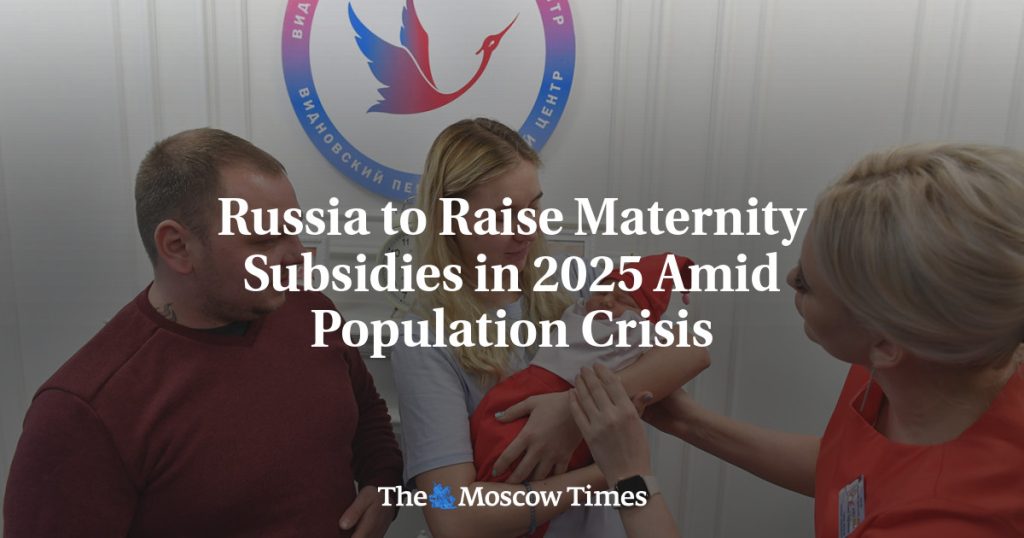Russia’s government has announced plans to increase state maternity payments by approximately $500 next year in response to a shrinking number of births in the country. Labor Minister Anton Kotyakov stated that first-time mothers will receive a lump sum of 677,000 rubles ($7,000) starting in 2025, which is a slight increase from the current payment of 630,400 rubles. Additionally, women who give birth to a second child will receive 894,000 rubles ($9,300), up from the current payment of 833,000 rubles. The Labor Ministry expects more than 1 million people to receive maternity payments next year, with a draft budget currently under consideration in parliament allocating 536.71 billion rubles ($5.57 billion) to the benefits program if passed.
Despite the proposed increase in maternity payments, some demography experts have criticized Russia’s program, which was introduced in 2007. They argue that the payments are too small to effectively motivate women to have more than one child and that they fail to keep pace with inflation. Even with the upcoming changes, concerns remain about whether the higher payments will be enough to address the declining birth rate in the country. The program, which was originally set to end in 2026, was extended by President Vladimir Putin until 2030 during his re-election campaign earlier this year.
The issue of declining birth rates in Russia has been a growing concern, with the country facing a demographic crisis due to its aging population and low birth rate. The government has been implementing various measures to address this issue, including incentives to encourage families to have more children. The increase in state maternity payments is one of the latest steps taken to support families and promote population growth. By providing financial assistance to new mothers, the government aims to alleviate the financial burden associated with childbirth and childcare, thereby encouraging families to have more children.
The decision to increase maternity payments comes at a time when Russia is facing significant demographic challenges that could have long-term implications for the country. With a declining birth rate and an aging population, there are concerns about the impact on the economy, healthcare system, and overall well-being of the population. Incentivizing families to have more children through financial support is seen as a way to address these challenges and ensure a sustainable population growth in the future. The government’s efforts to increase maternity payments reflect a broader strategy to tackle demographic issues and promote family-friendly policies that support population growth.
Overall, the proposed increase in state maternity payments in Russia is aimed at addressing the country’s declining birth rate and encouraging families to have more children. While the program has faced criticism for not being sufficient to incentivize women to have multiple children, the government’s decision to raise payments shows a commitment to supporting families and promoting population growth. With ongoing demographic challenges and concerns about the country’s future, initiatives like this are crucial in ensuring the well-being and sustainability of the population. By providing financial assistance to new mothers, Russia is taking a proactive step towards addressing its demographic crisis and building a brighter future for generations to come.


